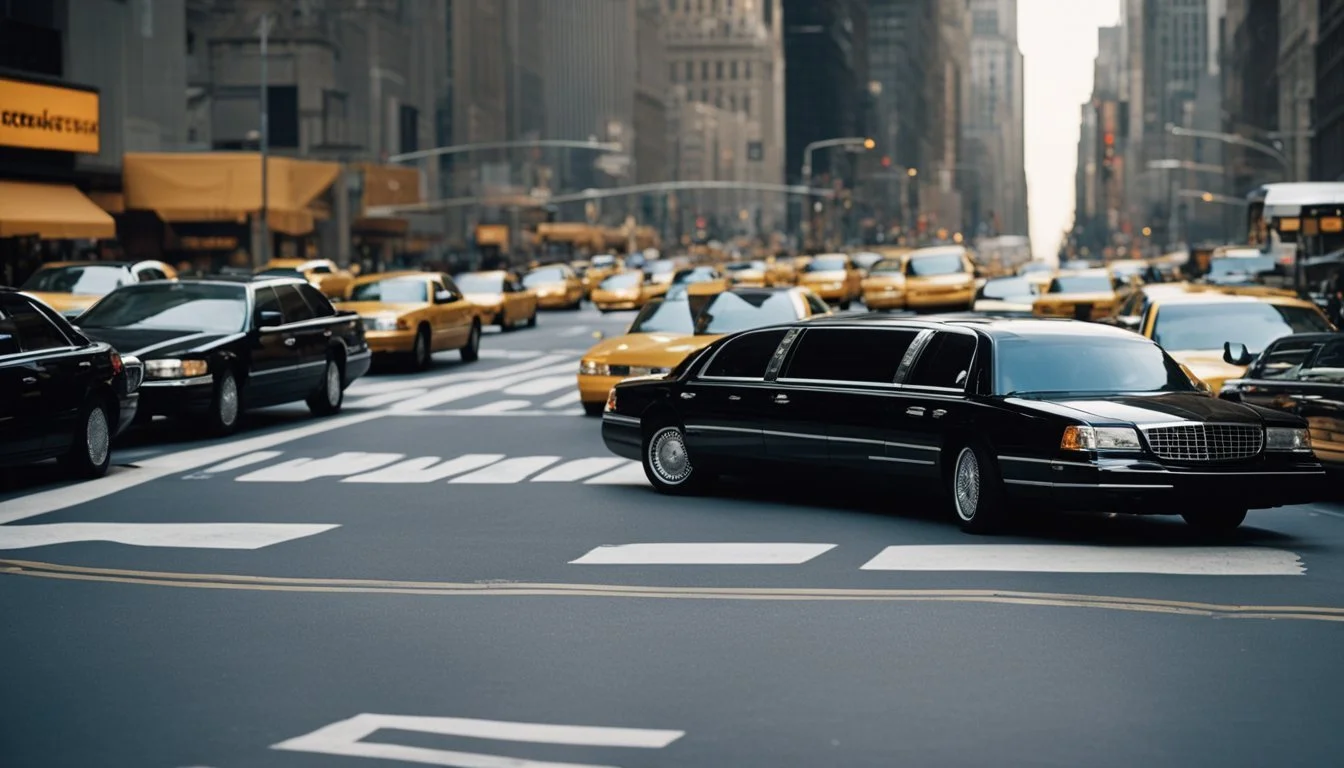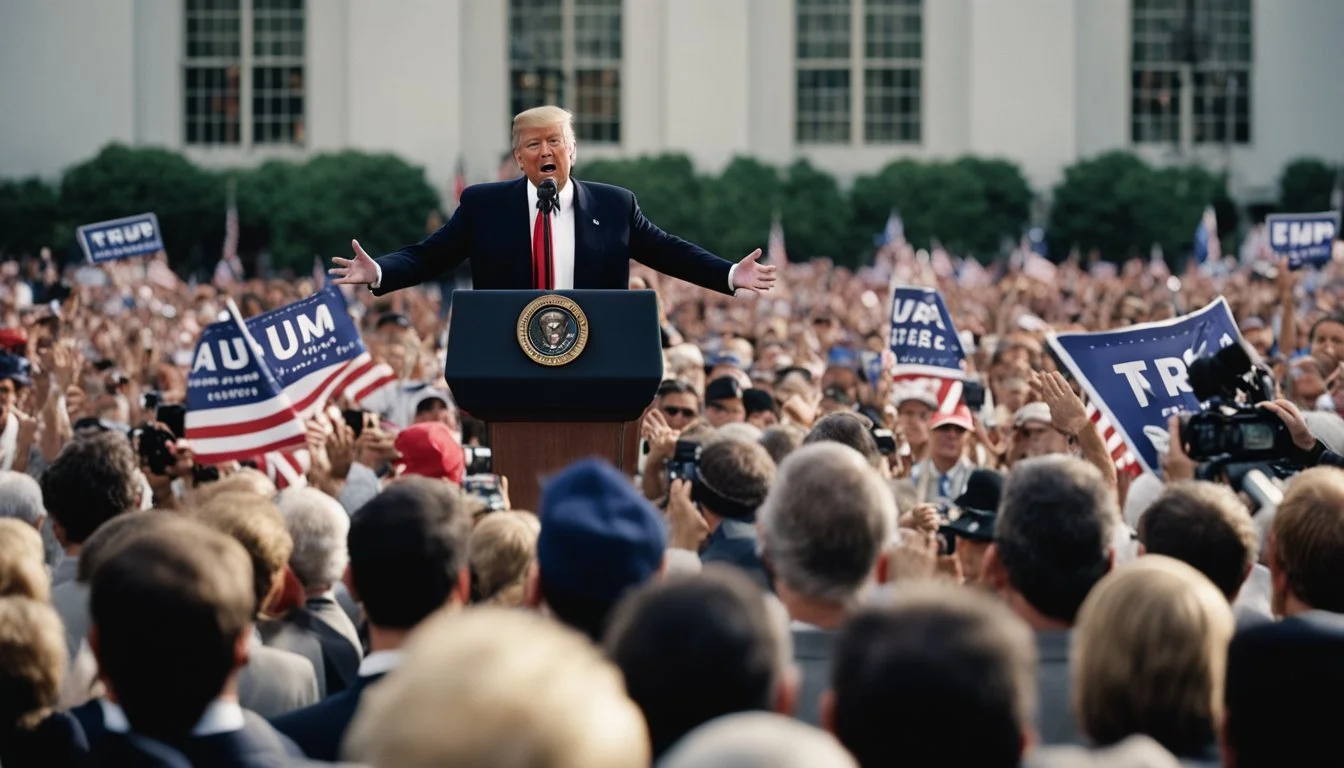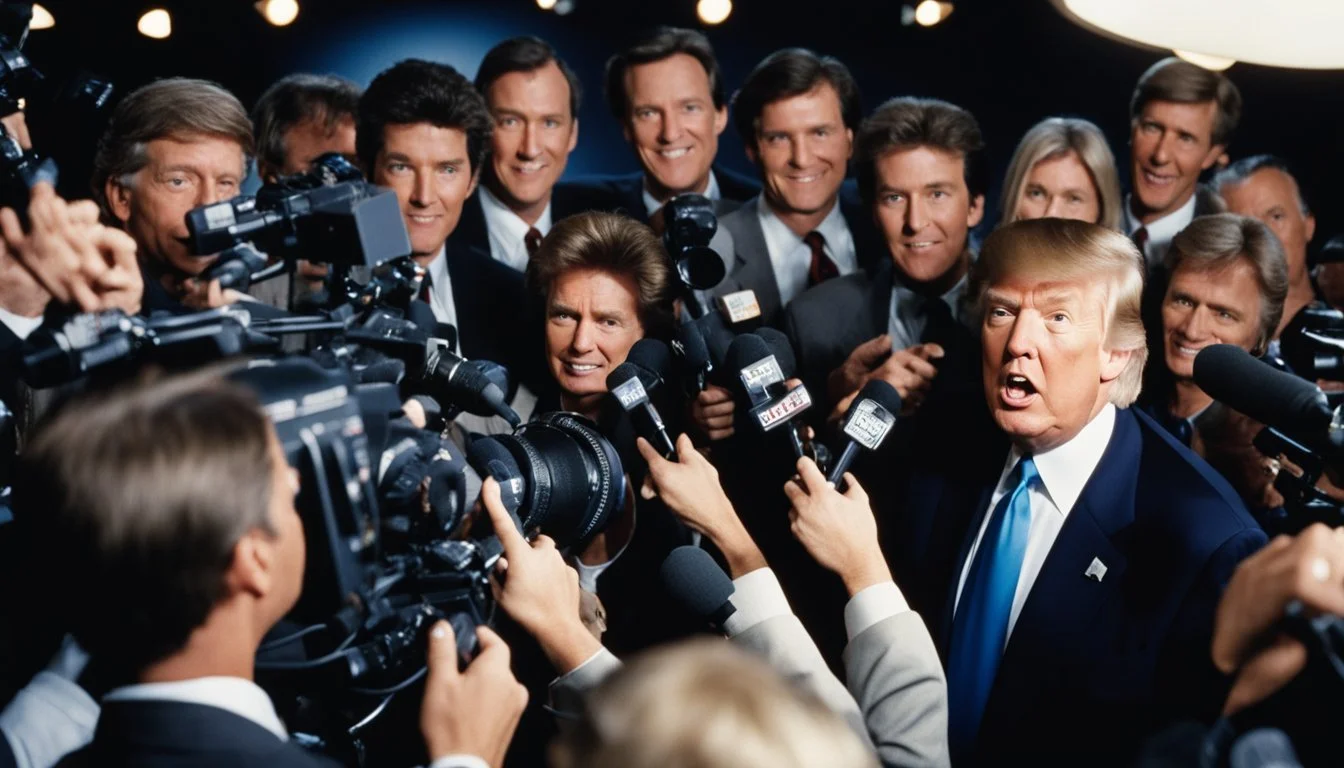The Rise and Fall of Donald Trumps Business Empire in the 1990s
The Tycoon's Rise Before Politics
Donald Trump's journey through the 1990s was marked by financial turbulence and a growing public persona. The decade saw him navigating a severe recession that threatened his business empire. A 1995 tax document revealed Trump reported an annual loss of $916 million, highlighting the significant challenges he faced during this period.
Trump's media presence expanded in the '90s, with frequent appearances on television shows like Larry King Live. He flirted with political ambitions, forming an exploratory committee in 1999 to consider a presidential run as a Reform Party candidate. This era also saw Trump embroiled in controversies, including remarks about Native American casino operators that drew criticism from political figures.
The New York Times' publication of Trump's financial information shed light on his business practices during this time. His approach to handling the economic downturn of the early '90s became a subject of debate, with some viewing his strategies as clever maneuvering while others saw them as indicative of business failures. These experiences in the 1990s laid the groundwork for Trump's later political career and public image in America.
Early 1990s Career and Public Life
Donald Trump's career in the early 1990s was marked by ambitious real estate projects, financial turmoil, and growing media attention. His business dealings during this period shaped his public image and set the stage for his later pursuits.
Real Estate Ventures
Trump continued to expand his real estate empire in the early 1990s. He focused on developing properties in Manhattan, including the Trump Palace condominium on the Upper East Side. The Trump Organization also pursued projects outside New York, such as the Trump Taj Mahal casino in Atlantic City.
Trump's developments often featured his signature lavish style and branding. He aimed to create luxurious spaces that would attract high-end buyers and guests.
Financial Challenges
The early 1990s brought significant financial difficulties for Trump. The real estate market downturn and recession hit his businesses hard. Many of his properties, including his Atlantic City casinos, struggled with massive debt.
In 1991, the Trump Taj Mahal filed for bankruptcy. This marked the first of several casino bankruptcies Trump would face in the coming years. He also came close to personal bankruptcy, with reported debts of nearly $1 billion.
Trump negotiated with banks to restructure his debt and maintain control of his core assets. These financial troubles became a defining aspect of his business career during this period.
Popularity in the Media
Despite his financial setbacks, Trump's media presence grew in the early 1990s. His high-profile divorce from Ivana Trump and subsequent relationship with Marla Maples garnered significant tabloid attention.
Trump appeared frequently on television talk shows and news programs. He cultivated an image as a bold, outspoken businessman. His book "Trump: The Art of the Deal" remained popular, contributing to his reputation as a savvy dealmaker.
This media exposure helped Trump maintain his public profile even as his businesses faced challenges. It laid the groundwork for his later reality TV career and political aspirations.
Political Involvement and Public Statements
Donald Trump's political activities in the 1990s laid the groundwork for his future presidential ambitions. He explored various party affiliations, made initial forays into politics, and garnered attention for controversial statements.
Party Affiliation and Beliefs
Trump's political allegiances shifted throughout the 1990s. He registered as a Republican in 1987 but changed to the Reform Party in 1999. Trump identified as a conservative on many issues but held some liberal views on social policies.
In 1990, he praised Soviet leader Mikhail Gorbachev for his reforms. Trump also expressed support for universal healthcare during this period.
His economic views focused on protectionism and renegotiating trade deals, ideas that would later become central to his presidential campaign.
Initial Political Endeavors
Trump formed a Presidential Exploratory Committee in 1999 to assess his chances of winning the Reform Party nomination for the 2000 election. He campaigned in California and released a book outlining his political views titled "The America We Deserve."
He proposed a one-time 14.25% tax on net worth for individuals and trusts worth over $10 million. This plan aimed to eliminate the national debt.
Trump ultimately decided not to run, citing party infighting as a key reason for withdrawing his bid.
Controversial Comments and Stances
Trump's public statements often generated media attention and controversy. In 1989, he took out full-page ads calling for the death penalty for the Central Park Five, who were later exonerated.
He criticized political correctness, calling it a "terrible term" that hampered honest discussion. Trump's comments on race drew scrutiny. He distanced himself from David Duke's Reform Party presidential campaign, calling Duke "a bigot, a racist, a problem."
In 1999, Trump said he would "take out" North Korean nuclear sites if diplomatic efforts failed, foreshadowing his later tough stance on the country.
Business Expansions and Branding
Donald Trump's business activities in the 1990s were marked by ambitious expansions and a focus on building his personal brand. These efforts shaped his public image and business empire during a tumultuous decade.
Advancements in Real Estate
Trump continued to expand his real estate portfolio in the early 1990s. He acquired the Plaza Hotel in New York City for $407 million in 1988, seeing it as a trophy property. Trump also developed Trump Tower, a 58-story skyscraper on Fifth Avenue that became his flagship property and headquarters.
In Atlantic City, Trump invested heavily in casinos. The Trump Taj Mahal Casino opened in 1990 at a cost of $1 billion. It was billed as the "eighth wonder of the world" but faced financial difficulties almost immediately.
Brand and Image Development
Trump focused intensely on cultivating his personal brand during this period. He positioned himself as a successful developer and dealmaker through media appearances and books. "The Art of the Deal," published in 1987, became a bestseller and boosted his celebrity status.
Trump's lavish lifestyle, including ownership of a 282-foot yacht and a personal Boeing 727 airliner dubbed "Trump Shuttle," became part of his brand image. He made cameo appearances in movies and TV shows, further increasing his public profile.
Despite financial setbacks, including business bankruptcies, Trump maintained his image as a successful CEO and developer. This brand-building laid the groundwork for later ventures like "The Apprentice" TV show, which debuted in 2004 and significantly enhanced Trump's celebrity status.
Engagement with Media and Press
Donald Trump cultivated a complex relationship with the media during the 1990s. He strategically leveraged press coverage and television appearances to build his public persona and promote his business interests.
Relationship with Journalists
Trump maintained an active dialogue with journalists throughout the 1990s. He frequently provided quotes and interviews to newspapers and magazines, often speaking candidly about his business dealings and personal life. The New York tabloids, in particular, became a favored platform for Trump to share his views and generate publicity.
Trump developed a reputation for being accessible to reporters, though he could be combative when faced with negative coverage. He mastered the art of crafting provocative soundbites that garnered attention. This approach sometimes led to exaggerated claims about his wealth and accomplishments.
Appearances on Television Shows
Television became a key medium for Trump to expand his reach and influence. He made numerous appearances on popular talk shows and news programs. Notable appearances included interviews on CNN's "Larry King Live" and NBC's "Meet the Press."
Trump's charismatic and outspoken personality made him a compelling guest for TV producers. He discussed a wide range of topics, from business and politics to pop culture. These appearances helped solidify his image as a savvy entrepreneur and dealmaker.
In 1996, Trump purchased the Miss Universe pageant, which further increased his television presence. He leveraged this platform to promote his brand and expand his media influence throughout the late 1990s.
Financial Disclosures and Public Perceptions
Donald Trump's financial history in the 1990s became a subject of intense scrutiny and debate. His business dealings and tax practices from this era continued to shape public perceptions of his wealth and financial acumen for decades to come.
Public Scrutiny of Wealth
Trump's financial status in the 1990s faced significant challenges. The 1990-91 recession hit his business empire hard. A tax document published by The New York Times revealed he reported an annual loss of $916 million as late as 1995.
This massive loss raised questions about Trump's business skills and financial stability. Some viewed it as evidence of financial mismanagement, while others saw it as a savvy use of tax laws.
Media outlets like The Wall Street Journal and Newsweek closely examined Trump's finances during this period. Their reporting often painted conflicting pictures of his true net worth and business acumen.
Business Transparency Issues
Trump's reluctance to release comprehensive financial records fueled ongoing debates about his actual wealth and business practices. His federal income tax returns became a particularly contentious issue.
Critics argued that full disclosure was necessary for public trust. Trump's supporters countered that his business success spoke for itself.
The lack of transparency extended to Trump's bankruptcies in the 1990s. While he framed these as strategic business moves, detractors saw them as signs of financial instability.
Public companies increasingly adopted transparency policies for political contributions. This trend highlighted the contrast with Trump's more opaque financial disclosures.




